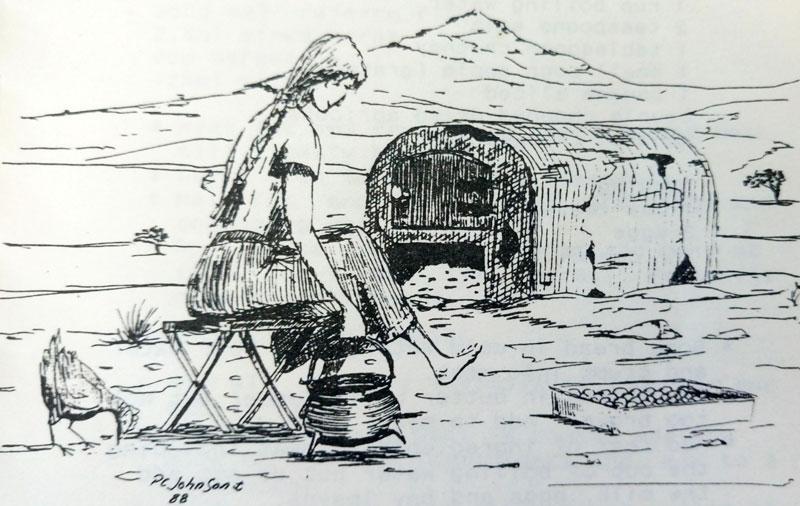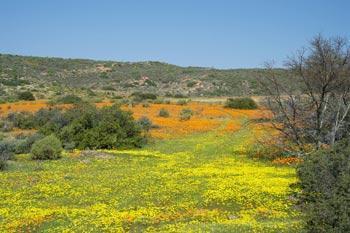Our Namaqualand Heritage - Namaqua Food Flavour

During the years of the Great Trek from 1834 when the epic way from south to north was paved, old pioneer families were already fighting for survival in Little Namaqualand, south of the Orange River – known also as the Grootrivier and, long before that, as the Gariep.
Life in Namaqualand during the early years of the nineteenth century left the white farmers no time at all for planting crops or erecting permanent homes.Life in Namaqualand during the early years of the nineteenth century left the white farmers no time at all for planting crops or erecting permanent homes.
In this semi-desert area, isolated and often stricken by droughts, the Namaqualand family learnt to be thrifty and to utilize natures’ reluctant offerings to the full (or – the families of Namaqualand learnt both to live frugally and to utilize and enjoy the somewhat meagre offerings of nature).
The winters inland in Bushmanland are extremely dry. Then the farmer and his family trekked (migrated) westward to the sandveld. The trail food (trekpadkos) was the tastiest of all. The trekboers ate mainly meat, mutton, but more often venison. Breakfast consisted of grilled liver and roosterkoek (grid scones), while gallopsop (“soup on the gallop”) was a popular midday meal.
Galopsop – A popular dish prepared while on trek. The freshly slaughtered mutton was boiled in water in a 3 legged pot and the broth served as a soup.

If the rainy season was early, food was in abundance. Black coffee was something of the past as milk was plentiful. The women folk boiled large pots of goat’s milk; baked fresh bread in their mud ovens outside; mad potbread, roosterkoek or skuinskoek. The latter was a delicacy amongst the trekkers made from a special cake of yeast. The dough was eventually rolled into sausage shapes and flattened slightly before being cut on the diagonal and fried in larde vet (lard); the sagte vet (dripping) was reserved for spreading on bread. Other unforgettable delicacies favoured by children were melksnysels (milkfood), frummeltjiesop (vermicelli and milk) and fresh buttermilk; not to mention a thick slice of fresh wholewheat bread spread with farm butter.
Usually the trek boer took a few chickens in a coop fastened underneath the ox-wagon. Feeding poultry required a measure of ingenuity – the trek boer took his pick-axe, opened the nearest anthill, and there was plenty of food for the poultry.
Although the journeys were slow and arduous, there was always hunting for relaxation, as the veld teemed with large and small game: ostrich, springbok and gemsbok, duikers and steenbok, and there was always something for the pot.....
Call us and schedule your listing today! Contact Us
Copyright © 2025 Hermanus Online Magazine. Web Development by Jaydee media.

